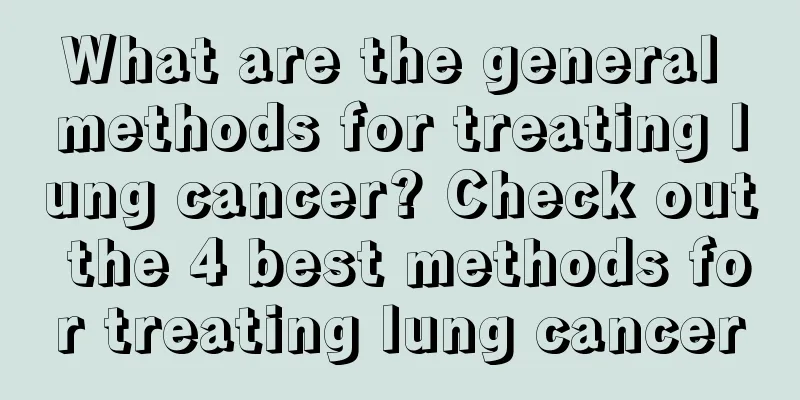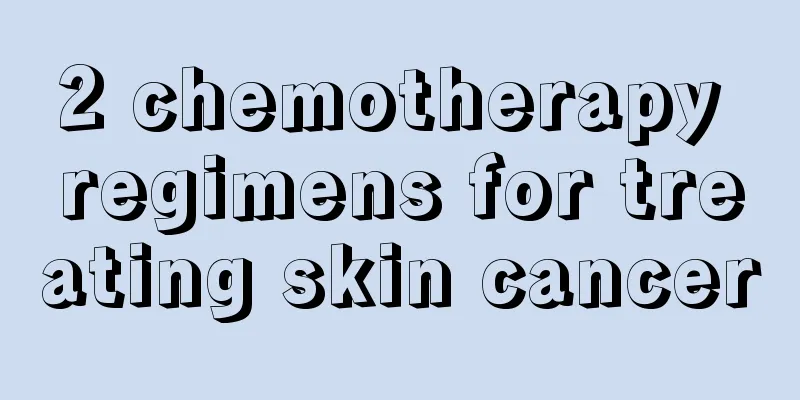What are the general methods for treating lung cancer? Check out the 4 best methods for treating lung cancer

|
Expert introduction: Currently, surgery is the preferred treatment for lung cancer, but it should be pointed out that chemotherapy is also one of the key treatment methods. Clinically, more than 90% of lung cancer patients need chemotherapy, but the purpose of application is different for different patients. The following is an introduction to the treatment of lung cancer: (1) Surgical treatment: Surgery is the first choice for radical treatment of lung cancer. For non-small cell lung cancer, except for some stage IIIb and IV, surgical treatment should be the main treatment or strive for surgical treatment. Radical resection is the only treatment method that can achieve clinical cure for lung cancer patients. Even for locally advanced lung cancer, other treatment methods can be used to shrink the cancer lesions first, and then surgical resection can be strived for. If the lesion is small, reasonable comprehensive treatment can be arranged after surgery, and the survival time of most patients can be extended. Patients with early lung cancer, such as early stage Ia lung cancer, can achieve clinical cure through surgery. In surgical treatment, more and more lung cancer cases can be treated with minimally invasive treatment, that is, thoracoscopic or small incision methods without cutting muscles, which can also achieve the purpose of radical resection, greatly reduce the patient's postoperative pain, and also increase the patient's requirements for beauty. (2) Chemotherapy: At present, chemotherapy for lung cancer in my country has been aligned with international standards. Based on the international standard drug use for lung cancer chemotherapy, my country has also formulated standard chemotherapy guidelines for small cell lung cancer and non-small cell lung cancer. Lung cancer chemotherapy is divided into first-line chemotherapy and second-line chemotherapy. In other words, even if the first-line chemotherapy fails, the patient can switch to the second-line chemotherapy regimen. (3) Radiotherapy: Radiotherapy is one of the commonly used methods for lung cancer treatment. However, the effect of radiotherapy varies with the histological type of lung cancer. Small cell lung cancer is the most sensitive to radiotherapy, followed by squamous cell lung cancer, and adenocarcinoma is the least sensitive. (4) Targeted therapy: Targeted therapy drugs such as Iressa and Tarceva, which are based on EGFR mutation detection, are particularly beneficial for middle-aged and elderly patients with advanced lung cancer who cannot tolerate chemotherapy. Lung cancer is a malignant tumor and the condition is very complicated. Complications may occur while taking some treatment measures. In this case, it is important to pay attention to follow-up examinations after treatment, especially the application of health care measures after treatment. It is recommended that health care measures be applied for a long time. |
<<: How to treat ascites in liver cancer? Three methods to eliminate ascites in liver cancer
>>: How to care for lung cancer patients? 3 nursing measures for lung cancer patients
Recommend
Which hospital is good at treating intestinal tumors
Which hospital can treat intestinal tumors well? ...
What is an osteosarcoma attack like?
What is the onset of osteosarcoma like? Speaking ...
How about surgery to treat brain cancer
The onset of brain cancer is seriously harmful to...
How is bile produced and excreted?
Human liver cells secrete a liquid, which is call...
The harm of tooth extraction anesthesia to the human body
I believe that many people are afraid of tooth ex...
How to treat sinus arrhythmia
When it comes to sinus arrhythmia, most people th...
Does watermelon cause internal heat? What should we pay attention to when eating watermelon
Watermelon is a must-have summer delicacy for coo...
Can pinching the bridge of the nose make it taller?
For female friends who love beauty, you all want ...
Advanced stage of thyroid cancer
Thyroid cancer is a relatively common malignant t...
What causes dark nails
Nails can determine a person's physical healt...
How to check liver cancer to eliminate hidden dangers. 4 physical examination items are recommended for diagnosing liver cancer
Liver cancer is one of the top three cancers that...
Corn silk, cassia seed, chrysanthemum, hawthorn
When the weather is dry, the human body is prone ...
What to eat to become thin
For some people who are prone to obesity, it is v...
What specific medicine is effective in relieving pain in patients with advanced lung cancer bone metastasis
When patients with advanced lung cancer have bone...
How to make Laba garlic turn green overnight
In addition to cleaning, slaughtering pigs and dr...









